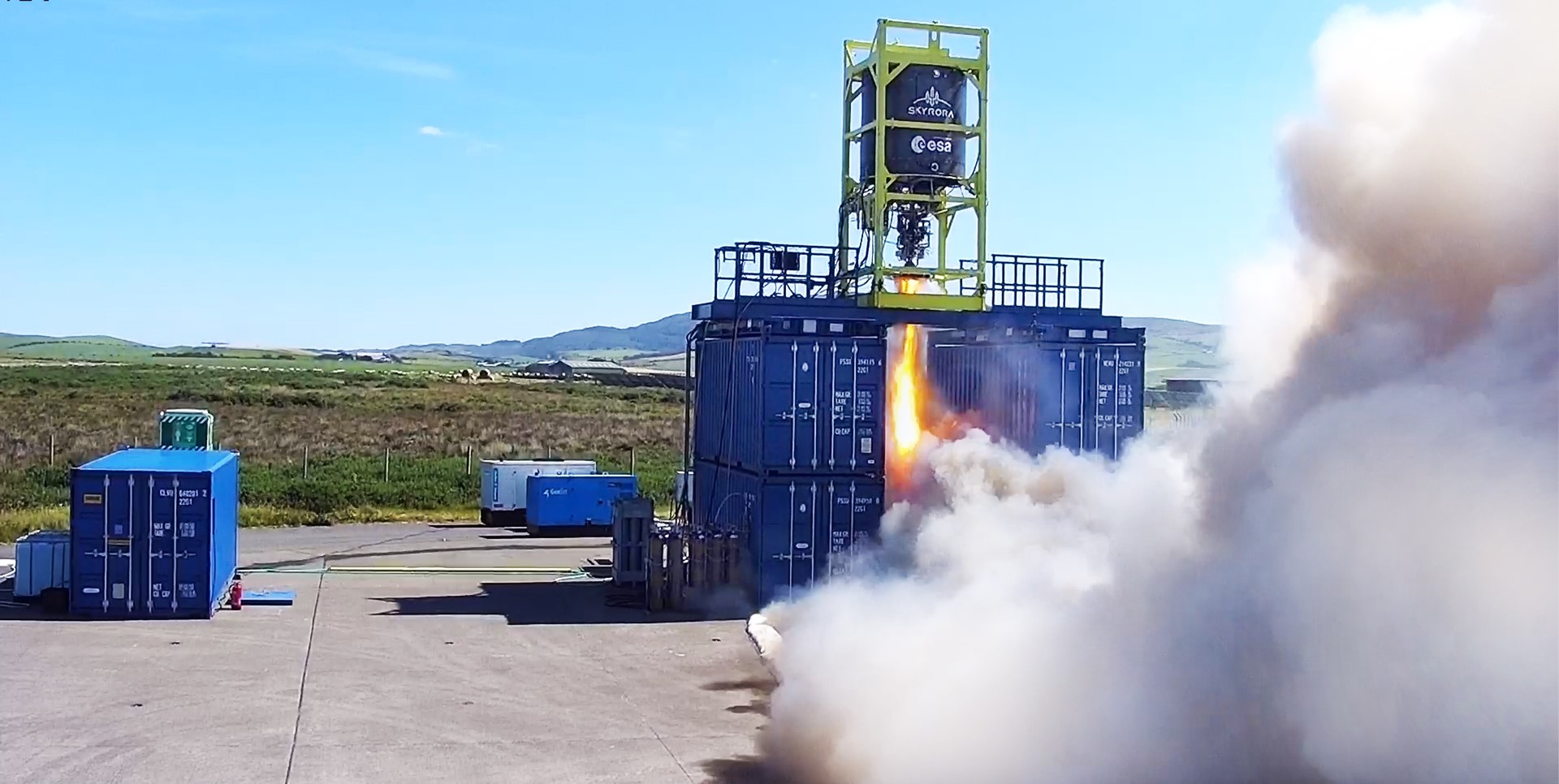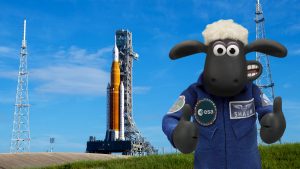Skyrora 2nd Stage Static Fire Test a Roaring Success
18th Aug 2022
Scottish vertical space launch company Skyrora successfully tested its second stage booster. The booster will send the Skyrora XL vehicle to .
The test firing marks the largest rocket integrated stage firing in the UK in the last 50 years. The last such tests were of the Black Arrow and Blue Streak rockets in the 1970s. Those rockets never went into production.
Skyrora on the Mull of Kintyre
The second stage test firing took place at Machrihanish Airbase, near the tip of the Mull of Kintyre. The airbase is a local community-owned site birthed out of the sale of RAF Machrihanish by MOD for £1. Funding for the test came from the ESA Commercial Space Transportation Programme. UK Space Agency also provided support.
Technical details
The test included the hot firing of the second stage engine. The test included a 20-second firing of a single 70kN liquid fueled engine. The engine maintained nominal operation throughout the burn, and produced the thrust expected.
With this test behind it, the company knows that it has a propulsion system capable of launching the payload into orbit. Commercial operation is now expected in 2023. The SaxaVord Space Centre at Unst, in the northernmost Shetland Islands, will host the launch.
The successful test comes on the heels of Skyrora opening the UK’s largest space industry manufacturing and production facility in Cumbernauld, North Lanarkshire, and the inauguration of an engine test facility in Midlothian.
Skyrora look forward and up
Volodymyr Levykin, Founder and CEO of Skyrora, said: “With the UK striving to capture a 10% share of the global space market by 2030, the successful Skyrora XL second stage static fire test puts Skyrora on track to become a key part of the UK’s new space industry as the first British company to conduct vertical launch from UK soil.
Skyrora now has purpose-built rocket manufacturing and testing facilities in the UK – as well as the largest 3D printer of its kind, which we are using to produce rocket engine components.”






Thank you for your comment! It will be visible on the site after moderation.